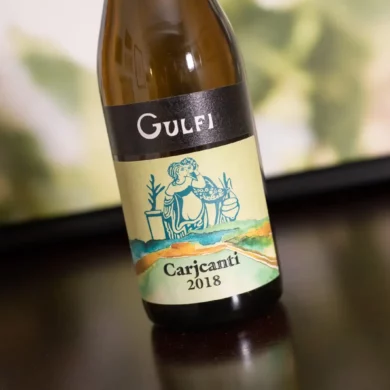When in doubt, spin the bottle.
To buy great European wines consistently, all you need to know is a handful of importer names. Rosenthal Wine Merchant is one of them. Established in the late 1970s by Neal Rosenthal, this New York-based importer has long taken its role as curator for American palates seriously. I first became familiar with them via Italy, from which they import Gravner, Paola Bea, Cappellano, Ferrando, Montevertine and Vodopivec. However, I’ve found their name comes most in handy when perusing the French wine aisle, particularly Bordeaux.
This wine wasn’t exactly polished: it was wild, intense and beautifully rustic, seemingly suggesting origins in a far-off place where LVMH’s scouts are deterred by the muddy roads.
Why is that? Because all the reasons to love Bordeaux (i.e. terroir-centric Merlot and Cabernet, long-standing historical estates with multi-generational families) are accounted for, and all the reasons to be turned off by Bordeaux (i.e. corporate, overly polished wines; en primeur madness jacking up prices) are by the wayside. Let me share an example on how this comes into play.
Last week, we visited my in-laws in the retirement community of Green Valley, Arizona south of Tucson. It is a lovely place smack in the middle of the Sonora Desert. Days are spent contemplating saguaro cacti and spying beautiful birds through binoculars. But it is a different kind of desert as well: a fine wine desert, where seemingly the best you can do is La Crema from the grocery store.
Fortunately for our pre-Christmas feast of pork tenderloin and risotto, we had time to go into the city beforehand where I searched out Tap & Bottle, a boutique bar and wine shop with a nicely curated selection of wines. (Phew!) I wasn’t particularly searching for a Bordeaux, and certainly “Duc des Nauves” doesn’t mention any Bordeaux appellations on the label because its a Vin de France. But something caught my eye about this wine, and spinning the bottle to see Rosenthal on the back label was all the vouch I needed. Sure, why not?
This wine wasn’t exactly polished: it was wild, intense and beautifully rustic, seemingly suggesting origins in a far-off place where LVMH’s scouts are deterred by the muddy roads. It can be thrilling to sense the personality of the winemaker in a wine, and with Château le Puy’s second wine, I got a sense for the Amoreau family’s stubbornness. They’ve persisted for 15 generations, following organic and biodynamic principles not because they’re trendy or good for business, but because that’s pretty much how the family did things in the 1600s, 1700s, 1800s, 1900s and 2000s. That trait shows up in the wine via a complex tapestry of dark fruits, a durable yet silky viscosity, and a musky-minty perfume — all of which seem to say: like it or not, this is who I am.
I’ve shied away from covering Bordeaux because it is such a daunting endeavor. For one, it is a vast place: a wine nation in its own right. But more to the point, you have to weed through a lot of overly manipulated and, frankly, dull wines to get to the untamed, assertive personalities that feel authentic.
If that sounds interesting to you, and you want to give Bordeaux a second chance as well, I have some advice: spin the bottle.
2019 Château le Puy “Duc des Nauves” Vin de France Rouge
 Vin de France
Vin de France
Grapes: Merlot (70%), Cabernet Franc (20%), Cabernet Sauvignon (10%)
Alcohol: 13.5%
Opinion: ★★★★ 3/4
Food-friendliness: Limited
Value: As expected
A beginner might like … seeing where Merlot, Cabernet Franc and Cabernet Sauvignon can go when they’re unbridled and wild. This triad has become so familiar in today’s wines — often presented like a boring boardroom of characters — that you might barely recognize them here. The Cabernet Sauvignon has unbuttoned its top two buttons (hello, free-wheeling cola note), the Cab Franc has removed its jacket and ditched the cufflinks (hello, peppercorn spice) and the Merlot has commandeered the overhead projector and is now drawing an indelicate cartoon about wine critics (hello, army of dusty tannins). “To hell with meetings this afternoon,” the Triad says. “Let’s go on a road trip.”
A wine obsessive might like … debating the presence of Brettanomyces in this wine. Old school Bordeaux is famous for allowing a little bloom of brett to develop, and while this trait resides on a spectrum that can easily tip into flaw territory, here I find it to be a masterful element that seasons the whole wine. It’s a thumbed nose at any lingering vestige of the Parker era in Bordeaux.
Support Freewheeling & Independent Wine Writing
Château le Puy “Duc des Nauves” is one of many Wines to Admire reviews that are available only to paying subscribers of Opening a Bottle. We’ve made this one free so everyone can get a taste for our unconventional — and hopefully fun-to-read — approach to wine criticism.
Subscribers also gain access to Tasting Reports, our curated profile pages of Essential Winemakers in France and Italy, and recorded wine classes to deepen your knowledge on European wines. All for just $5/month or $49/year. Take advantage of these benefits and help us keep our wine writing and reporting ad-free by subscribing today.
Note: This wine was purchased with funds raised from our editorial budget thanks to our paying subscribers.





